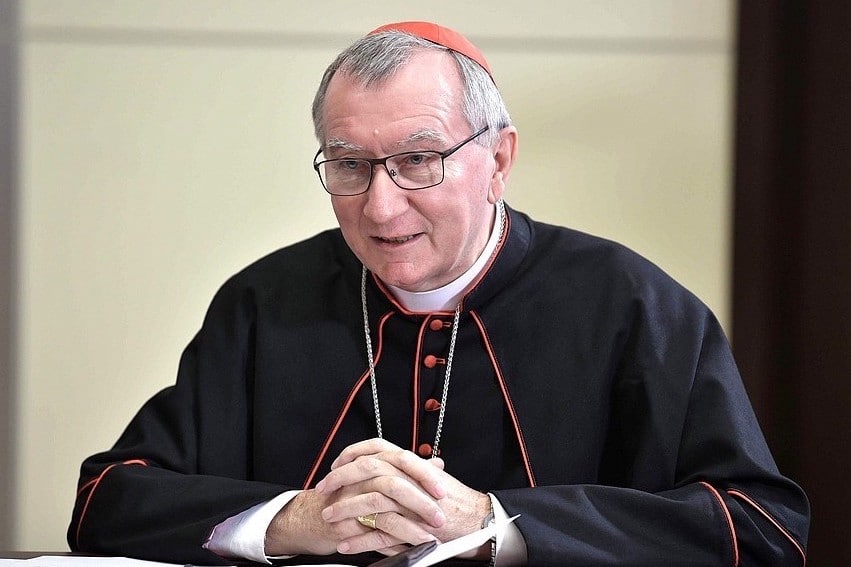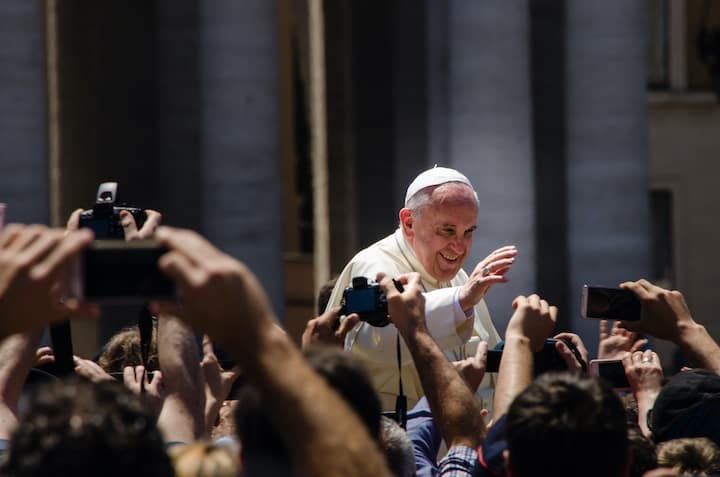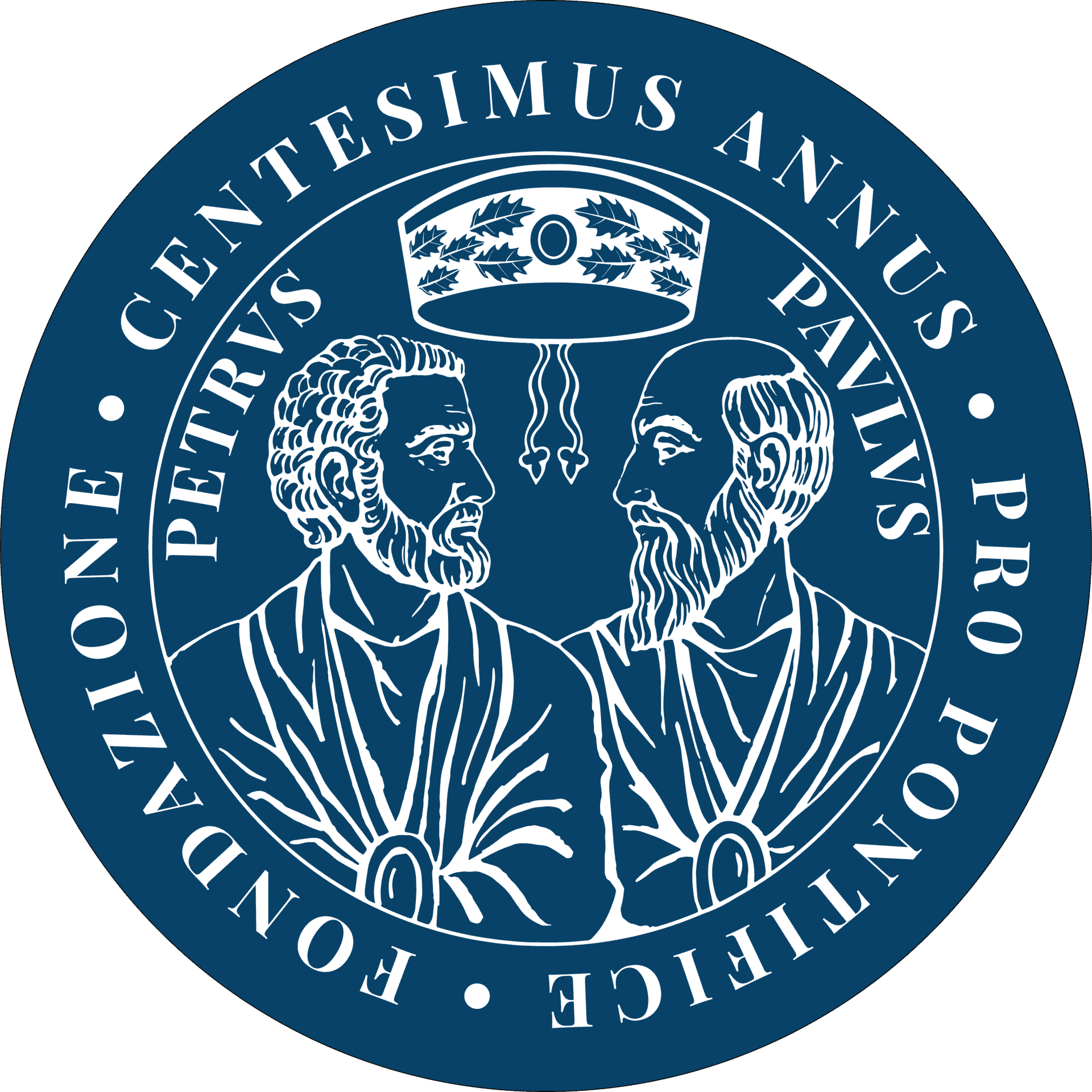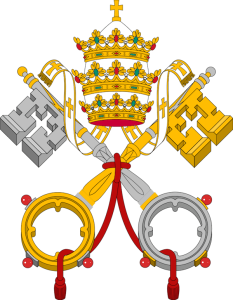The Social Teaching of the Church As a Tool of Guidance for Young Generations
Centesimus Annus Pro Pontifice Foundation
“Economy and society. International Award Ceremony”
Palazzo della Cancelleria, December 16, 2021
S.E.R. Cardinal Pietro Parolin
Secretary of State

Cardinal Pietro Parolin
Madam President
Em.mo President and Members of the Jury,
Your Eminence,
Your Excellence,
Ladies and gentlemen
Dear friends,
1.Each historical era has generated its own specific myths. Even ours does not escape this sort of law of social evolution. I intend here to refer to three myths, in particular. They are certainly not the only ones, but they are the ones that seem to me to complicate in a special way the condition of young people and tend to exaggerate the problems connected with the educational process. As you will see, it is the interweaving of these new idols that makes the future perceived more as a threat than as a promise. If yesterday we were led to spend ourselves in view of a future that was believed to be better than the present – in this resided the force that fueled the tension towards the not yet – today the future tends rather to frighten: hence the deflation of that tension.
Intervening in the debate, primarily in a cultural sense, by showing the irreducible falsity of these myths is one of the primary tasks of the Social Doctrine of the Church (SDC), which is to effectively set up an educational process that is adequate to today’s challenges and to promote a credible pact between generations. There is a novelty, in fact, that connotes the current historical phase and that is unparalleled in previous eras. It is the acceleration with which change takes place, an acceleration that causes the shrinking of the time of experience, that is, the reduction of opportunities to gain experience.
The “time of haste” – as most of the neuro-psychological research confirms – causes the growth of those forms of psychopathy that do not correspond either to psychoses (because the psychopathic personality is not destructured) or to neuroses (because the disorder does not originate from some conflict). Rather, they are due to the fact that, in order to make decisions wisely, and therefore satisfyingly, it is necessary to have experienced in some way the terms of the choices; but to gain experience takes time. What I would like to say is that while yesterday the res novae happened with a temporal examination such as to leave room for adaptation, even psychological and emotional, today “the new” happens with such rapidity as to cause, on the one hand, overlapping effects and, on the other, displacement effects. In short, the Heraclitus river of history has always flowed; but today it flows more quickly. And this is a problem, especially, and in the first place, for young people.
The contribution that the social teaching of the Church can make, together with the witness of commitment and joy of many young believers, is truly remarkable.
2.The first of the above myths referred to is what we can call technological: everything that is possible must be realized because it generates, or increases value. As if to say that everything that can be done must be done. That it is a myth is revealed to us by the fact that the notion of possibility does not include the technological possibility alone, but also extends to the moral one. Whenever there is a decision to be made, a doubt arises, and doubt can “petrify”, as the story of Medusa’s head well illustrates: cutting (de-cidere) her head is what needs to be done in order not to be paralyzed. Now, as long as the indecision concerns the choice of the most convenient means to achieve the goal, reason, assisted by technique, is able to unlock the situation. However, it is another case when the problem of choice concerns the very purposes of the action. In such situations, when it comes to choosing between alternative ends, reason and recourse to technology are no longer a sure remedy for paralysis; on the contrary, they can aggravate it.
On closer inspection, this is the root of the current “discomfort of civilization” to use an expression that refers to a famous work by Freud. Intelligence, in fact, instead of allowing us to compare and choose the best among various valuable options, paralyzes us. Unlike their ancestors who did not have to choose continuously and whose great choices took place once in their lives – when the choices were not pre-established– today’s young people are subjected to continuous decisions that concern, virtually, all areas of life: the choice of studies and profession; affective relationships; politics; insertion into civil society; purchases and consumption. It is this situation that creates the paradox of choice: when we talk about choice we seem to refer to a space of freedom, but at the same time we are increasingly forced to choose. Choice, a situation that postulates freedom, becomes a kind of necessity.
Here we are at the central point of the discourse: when the problem of choice consists in deciding between alternative means to achieve a certain end – when, that is, in Kantian terms, the question that awaits an answer is of the type “what must I do to get what I want” – recourse to technical reason is in itself sufficient. We ask “technical reason” for the solution algorithm. But when the question becomes: “what is good that I want”, that is to say when it comes to choosing between different ends, the need to have a criterion of choice based on the category of value judgment becomes indispensable. No technological progress can ever provide me with the criterion of value on which to choose my life plan. We now understand the extent of the pitfall that the technological myth is spreading: to make believe that the advancement of technical-scientific knowledge is sufficient to solve every problem of choice. And therefore that, after all, everything can be resolved with waiting. We know instead that this pitfall has a sad outcome: the whole of existence becomes without purpose and without meaning. Hence the danger that everything becomes indifferent, the danger of the Sartrian conclusion “of the indifference of all possibilities”.
Is it any wonder then that – as the chronicles document – many young people tend to carry out ritual practices (clubs, alcohol, drugs) whose raison d’être is to procure an “emotional stunning”, which functions as extasy, then exit, momentary relief, distraction and then disinterest in everything related to the world or the discourse of values? On this front, the contribution that the Church’s social teaching can make, together with the witness of commitment and joy of many young believers, is truly remarkable.
3.The second myth, referred to above, is the well-known one of homo oeconomicus, a myth that can be explained as follows: since the behavior of human beings would be moved solely by self-interest, the only way to ensure a social order, free and economically advanced, is to intervene on incentive schemes. In other words, from the assumption – obviously implausible – according to which relationality has no value in and of itself, it is drawn that if you want an individual to do something, there is no better way than to offer him the appropriate incentive to the situation. (Clearly, the incentive does not necessarily have to be material or cash.) But why is the use of incentives in the educational process devastating? An incentive scheme always hides a power relationship, a relationship that is certainly preferable to that associated with coercion: it is always better to offer incentives than to coerce the will of others. There are, however, ways of persuading, giving testimony, that is, intervention on the motivational system of the subject. Now, the point to emphasize is that the use of incentives always leads to think, in some way, that there are no good reasons to do what has been requested, so that membership must be “bought”. And in fact, the incentive is a form of exchange, albeit sui generis. If an employee is “paid” to be honest at work, others will no longer attribute moral value to honest behavior. With the result that, in the long run, the use of incentives tends to produce a shifting effect on people’s intrinsic motivations.

Catholic social teaching is a compass for young generations
The question arises: why is the tendency to use a tool such as incentives, which in the long run can generate perverse outcomes, so widespread even among those who carry out educational tasks? The answer that I think I can suggest is that the culture of homo oeconomicus has now entered, in our societies, in areas of life (family, school, politics) that are not constitutively equipped to support it. The novelty, certainly not insignificant, of this era lies in the tendency of the logic of the market to encompass every need of the human being, every activity and every moment of his life within a single form of thought, that of the relations of exchange between equivalents, which – as we know – is the paradigm that governs market exchanges.
Yet, paradoxical as this may seem, the hegemonic influence that the culture of homo oeconomicus is exerting not only on the cognitive maps of young people, but also on the sphere of their feelings, continues not to be grasped and socially focused. The market has now become a vital world for young people: advertising, induction and manipulation of needs, consumption as a way of communication increasingly affect their life choices. And today’s young people – unlike those of past generations – are discovering that they are important from an economic point of view, even if they are not placed in a position to fully understand the scope of their decisions. They live in a world saturated with “economic noises” that, instead of helping them decide, can astound them. Yet, it is almost never thought of educating young people in the spiritual dimension of life, in how to remain free from the pitfalls of money, when from being a slave you become a master over it. John Locke, at the beginning of the eighteenth century, had already shown how money is an instrument that “constitutes an irreparable separation between men”.
4.Let us now turn to the third of the above myths that were said. A sign of the times, typical of the current historical phase, which deserves a more careful reading than it is receiving, is that insistent appeal to ethics, which has been replacing that equally insistent appeal to politics, typical of the 60s of the last century. However, as can be seen, the convergence on the primacy of ethics ceases at the very moment in which we ask ourselves to reason about concrete ethical questions, therefore it does not lead to ethical consensus.
Well, I am of the opinion that the Social Doctrine of the Church (The expression “Social Doctrine of the Church” is due to Pius XII, when he said, in the radio message of June 1, 1941, for the celebration of the 50th anniversary of the encyclical “Rerum Novarum”, that the magisterial document of Leo XIII is “the fruitful seed, hence the Catholic social doctrine” (n.5).), under a precise condition, can constitute prior to today a way to promote a convergence between the many approaches to the ethical question in both the economic and socio-political spheres. The condition I am referring to is that the SDC is visualized not as a moral theory in addition to the many already available in the literature, but as a “common grammar” to all these, as it is based on a specific point of view, that of caring. Indeed, where the various contemporary ethical theories lay their foundation either in the search for rules (as happens with the multiple versions of positivistic natural law, according to which ethics are borrowed from the legal norm), or on the theme of action (think of utilitarian and contractual theory), the SDC welcomes as its strong point the idea of “being with”. Ethics, even before taking care of enunciating principles and suggesting rules, is a dwelling, a “home” in which one takes care of oneself, and of others; in a word of the human good.
The key to the ethics of the common good, which is the SDC’s proprium, is that in order to grasp the identity of human action, it is necessary to place oneself in the perspective of the person acting (Veritatis Splendor, 78) and not in the neutral perspective of the third person (as natural law does) or of the impartial spectator. St. Thomas had already observed that the moral good, being a practical reality, is known primarily not by those who theorize it, but by those who practice it: it is he who knows how to identify it and therefore choose it with certainty every time it is under discussion.
What does it mean to accept the point of view of the ethics of the common good? In response, it is worth starting from the consideration that the central theme of the SDC, that is, the goal to which it aims, is that of the social order not only just, but also fraternal. Socio-economic action, in fact, cannot be reductively conceived in terms of all this (institutions, rules, instruments) that serves to ensure social coexistence , but also (and above all) life in common. Aristotle had well understood the profound difference between life in common and the mere commonality of grazing that is proper to animals. If, therefore, life in common is the context within which individual, ethically sensitive life plans are realized, then that context must also be recognized as provided, as well, with an ethical dimension.
Why does the category of common good continue, then, to be confused with the growth of income, even among insiders, generating many misunderstandings and causing several sterile and inconclusive disputes? It should be born in mind that it is with the utilitarian ethics of J. Bentham (1789) that the idea is affirmed and spreads according to which the purpose of economic action is the maximization of total utility, with which the organization of the market (that is, of the economy) and of public institutions must be such as not to hinder the achievement of such an objective.
It is therefore appropriate to specify carefully the characteristics proper to the notion of the common good. Which should not be confused with either the private good or the public good. In the common good, the advantage that each one derives from being part of a certain community cannot be separated from the advantage that others also derive from it. As if to say that the interest of each one is realized together with that of the others, not already against (as happens with the private good) nor regardless of the interest of others (as happens with the public good). In this sense “common” is opposed to “own”, just as “public” is opposed to “private”. It is common what is not only one’s own, nor what belongs to everyone without distinction. What, then, is the “enemy” of the common good? On the one hand, those who behave like opportunists, that is, those who live on the shoulders of others; on the other hand, those who behave like a pure altruist, that is, those who cancel their own interest to favor the interest of others. Both behaviors do not nourish the common good, even if for different reasons and with different consequences. Neither pure selfishness nor pure altruism can make sustainable – by themselves – a social order of humans. What, then, is the friend of the common good? Behavior inspired by the principle of reciprocity. Which sounds like this: I give you something freely so that you can in turn give, according to your abilities, to others or possibly to me. On the contrary, the principle of the exchange of equivalents reads: I give you something on condition that you give me in return the equivalent of value. Thus, while the principle of reciprocity postulates – as Aristotle had already indicated – proportionality, the principle of exchange postulates equivalence.
The acceptance at the cultural level and the translation into practice at the political level of the principle of reciprocity are the sure guarantee of a harmonious coexistence capable of the future. This is the specific – though not unique – contribution that Catholic thought is able and therefore must make to the regeneration of the polis. It is not difficult to take this into account. The original structure of the principle of reciprocity is ternary (I, you, the third); where that of the exchange of equivalents is binary (in the contract there is only an “I” and a “you”). As Fr. Ricoeur reminds us, it is the entry of the third into the intersubjective relationship that creates and keeps society alive.

CAPP-USA
It is no small merit of Pope Francis’ magisterium to have been able to apply the principle of fraternity in both institutional and economic terms, making it become a cornerstone of the social order.
In carrying out her mission, the Church seeks and encounters the response of human beings subject to the provocations of history. How these human beings, of which the Church itself is composed, live, their possibilities of realizing themselves, of expressing their freedom, are not extraneous and indifferent facts to evangelization, since on them depend both its specific traits in a given era and the response that it will find. It is no small merit of the magisterium of Pope Francis that of having been able to decline in both institutional and economic terms the principle of fraternity making it a cornerstone of the social order. There are pages of the Fratelli Tutti that better help us to understand the proper meaning of the principle of fraternity. That is to constitute, at the same time, the complement and the surpassing of the principle of solidarity. In fact, while solidarity is the principle of social organization that allows the unequal to become equal, the principle of fraternity is that principle of social organization that allows the already equal to be different, that is, to express their plan of life differently, or their charism. The seasons that today we have left behind, the 800s and especially the 900s, have been characterized by great battles, both cultural and political, in the name of solidarity and this has been a good thing; think of the history of the trade union movement and the struggle for the conquest of civil rights. The point is that a good society cannot be satisfied with the horizon of solidarity, because a society that was only supportive, and not even fraternal, would be a society from which everyone would try to distance themselves. The fact is that while fraternal society is also a society of solidarity, the reverse is not automatically true.
The above allows us to understand the specific role of mercy in our societies. In the Hebrew language pity is a visceral feeling, rendered by the term “Rechem“, which literally denotes the womb, the generative bowels. In the Old Testament the organ associated with the concept of mercy is the maternal uterus: “Rachamim” is a compassion so deep that it contracts the bowels. In the Latin language and culture, the vital center of man moves from the diaphragm to the heart. It is no longer the breath that keeps the person alive, but the blood circulation. The heart is the center of life and the sight of the wretched shakes us so much that mercy flows from the heart. Note an interesting consequence of this change of vision: for the Latin cultural matrix, mercy is no longer an exclusive attribute of femininity, given that all human beings have hearts. Everyone can turn their “heart to the wretched”, that is, be capable of mercy. In the Christian perspective, mercy speaks of the way in which love must be manifested; that is, it exercises justice by making those who are forgiven just. “God loves by mercy,” wrote Pope Francis.
This is why cultivating mercy is an indispensable task not only from the point of view of the civitas – something that has long been known – but also from that of the economy. Since economic institutions influence – a great deal – economic results, it is necessary to ensure that the economic-institutional structure of society encourages – and does not penalize, as foolishly happens today – the widest possible diffusion among citizens of the practices of mercy. The results will then follow, despite what skeptics of varying philosophical ancestry think. The secret of merciful action is all here: it helps us to overturn the traditional (and let’s face it, often comforting) ethics of philanthropy, leading us to reflect on the essentiality of the dimension of gratuitousness at any moment of human experience, and therefore also in the economic one. If it is true that gratuitousness can be thought of as the figure of the human condition, then it must characterize the way of being also of cheapness. Making it clear how it is possible to do business, to achieve important results while staying in the market, without severing the relationship with others, is the SDC’s great contribution.






